
Getting the right alpine winter clothing system is a nightmare of trial, effort ... and money, because you go through just about every kind of environment. First you have a walk or ski in, often conducted in sunshine, which makes things incredibly hot. Then you gear up at the base in the shade feeling a little cold and clammy, and follow this with some simul climbing up a big snow couloir to reach the base of the difficulties, where you'll start either getting cold on a belay or want to shed as much clothing as possible to increase your mobility when leading the pitch. After the climb you might have 10+ rappels to do in the evening cold, then a ski out, which involves a cold head wind and impromptu ditches in the snow here and there. Add to this that you need to be prepared for a winter storm even if you try to avoid climbing in bad weather, and you could find yourself with a backpack of clothes for 'just in case moments'.
Of course everybody is different with regards to circulation and how their body responds to the demands put on it, as well as the environment around it, so all this advice has to be taken with a pinch of salt. The following clothing and equipment suggestions are what work for me but this is not necessarily the case for everyone. As your climbing evolves so will your clothing systems. If you are just starting out the emphasis will probably be on warm clothing, as you'll be standing around a lot. As you progress and start simul soloing a lot of ground and leading hard mixed you'll realise the need for decent layering to keep from sweating too much. So keep open minded about all these suggestions and mix and match whatever kit depending on what you feel is right for you.
"...As your climbing evolves so will your clothing systems. When starting out the emphasis is on warm clothing, as you'll be standing around a lot..."
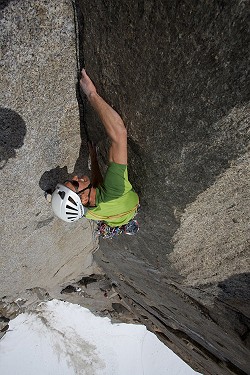
Massively important; almost always overlooked. I get cold legs in the winter and it's a constant gripe. It's definitely my winter weak point and not a pleasant one after an hour on belay. So I actually double up my trouser baselayers if I know it's going to be a technical climbing day with lots of long belays and make sure that whatever trousers I wear on top have huge pit zips for ventilation for the walk in. Merino wool vs synthetic is the big choice you will have to make. Synthetic will wick faster but I find is less comfortable than wool, I also find synthetics much colder when wet than a wool baselayer.
For leg baselayers I use a combo of Patagonia Midweight merino wool and a Smartwool boot cut. As I don't like wearing gaiters I pull down the Patagonia part over my La Sportiva Spantiks (review here) and the boot cut top of the Smartwool comes down nicely to my boot. It isn't an ideal solution but it's one that has worked pretty well for me over the last couple of years. Otherwise you could go for a much warmer single layer such as the Marmot Midweight bottom.
For the top I like to have a half-zip for when things get a bit sweaty and have been using a Patagonia Midweight merino wool top for the last two years. It's still in perfect condition even after all this use. A half zip allows you to cool down a bit but also to erect a slight collar around your neck for when things get a bit too cold. I actually complement it with a Smartwool neck gaiter, which is awesome for keeping the back of my neck warm.
Fleece
Some kind of fleece layer is really important as well. The fleece garment has changed quite a lot in the last few years with a new breed of thinly woven fabric superceding the old fleece 'shag' feel. This is great as fluffy fleeces are terrible when wet. Patagonia paved the way with their R1 hoody which I think is one of the best bits of (albeit boring) kit you can get. It's a perfect fleece layer for the mountains as it's thin and also has a stretch hood which fits over your helmet. Doing the zip up fully creates a mini balaclava which is really awesome for when the wind picks up. Many other companies have followed suit though with Marmot offering the Vars Hoody (slightly thicker and warmer) and Mountain Hardwear the Super Power Hoody.
Mid Layer
This is a bit of a tricky one. But if you want to go with thin bottom layers like I have with the R1 hoody then a mid layer is pretty useful on long technical climbs. The Patagonia Nano Puff (review here) is an awesome bit of kit. It's very light, just the right warmth as a mid layer and packs away into its own chest pocket. The point of a mid layer, for me, is that I can use it to compliment a lighter belay jacket but I'll also put it on when doing technical lead blocks and I'm seconding. Being able to pack it away into its chest pocket and clip it onto my harness means that you can go packless on certain leads if need be and still have something insulating to put on at the belay while you wait for your second. Marmot do a slightly warmer version, the Baffin which also packs away into its chest pocket; whilst Rab offer essentially the same as the Nano but with a hood (the Xenon).
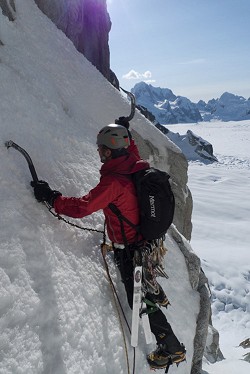
The most important thing here is the fit. An extra clever pocket or new membrane won't count for anything if it makes you look like you have breasts and pulls up out of your harness at every stretched out move. Don't buy too big: this seems to be a common theme with alpinists. You really want something very snug that won't bunch up when pulling awkward moves. This really is person-specific of course.
Marmot have a pretty extensive jacket list that is worth looking at but I find personally that the fit doesn't work for me which is a shame. The Patagonia Slim fit works really nicely for me (not that I'm slim) and so have quite a preference there. As I say this really is up to you: don't buy a jacket online before trying it out before hand!
For hard shells there is a new super breed: superlight. The Supermica and Nano from Marmot are both excellent and you'd be amazed at how durable they are even though they look like they're made from tissue paper. Patagonia responded with their new M10 range which I'm a big fan of. The M10 jacket is incredibly tough but super light; it is 50g heavier than the Marmot offering but in my view a whole lot tougher. The Rab Momentum is also worth a look: as light as the M10 but a fair bit cheaper. If you're not convinced with the new light hard shell lines then you should take another look. With such light and compact kit you can combine a soft shell top to climb in with one of these in your backpack for that 'just in case' moment. At 232g for the Nano you can't go wrong really.
"...An extra clever pocket or new membrane won't count for anything if it makes you look like you have breasts and pulls up out of your harness..."
As for soft shells the pick is huge as far as I can see in the alpine realm. I still think that the Patagonia Ascensionist (review here) is maybe the best bargain you can get. However Marmot also have some good offerings, but I prefer a really thin soft shell which they do in the form of the the Up Track. The Marmot Tempo is a very light soft shell that looks more like a fleece layer than a jacket and by all accounts is awesome to climb in ... however it doesn't have a hood. Which is of course no problem if you combine it with a Nano or a Supermica in your pack for when the elements turn bad. Rab have two good jackets in the form of the Baltoro Alpine and their new Exodus jacket that provide a thin soft shell protection.

Trousers
In the winter I definitely have a preference for hard shells in the mountains. Light hard shells with big ventilation zips. The downside is that lightweight hard shells cost a fortune and really don't last long compared to their jacket counterparts. I just like hard shells as I really feel the cold through my legs; others may be different of course. Patagonia currently provide the lightest of the hard shell trousers in the form of the M10 (240g!) but it's got a hefty price tag and you really have to be incredibly careful with your front points on it. Otherwise their Stretch Element bib is a really nice pair of technical trousers and a lot more durable. If you can get your hands on a pair of Marmot Exum pants then they are worth a look at. Rab stock a good selection of hard shell trousers as well, with the Latok Alpine looking like the best of the pick. Mountain Hardwear have a good selection too, for example the Escape Pant.
Soft shell trousers are definitely the way forwards now, apparently! It does make sense of course and even I now wear a pair of Patagonia Guide trousers in the winter - they are pretty thick so still keep me warm. As soft shell trousers aren't really my thing I can' t recommend anything else from personal use for the winter (in summer I definitely wear soft shells). But the line-ups of Marmot and Mountain Hardwear are pretty good (eg the Synchro from MHW). Remember you can always wear a super light soft shell underneath such as the Marmot Tioga and then put on a light hard shell on top such as the M10 - this combo actually works surprisingly well.
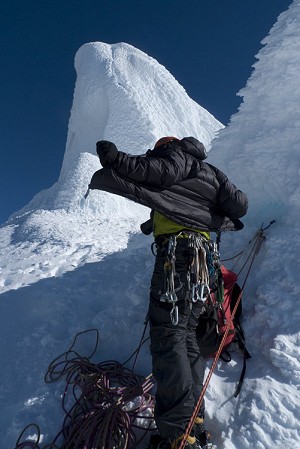
Belay Jacket
Down is the way to go, no contest. My perfect winter down jacket comes in the form of the PHD Mountain Software Alpine Ultra. It's the perfect alpine downie - 330g and rated to -10 degrees - it blows the competition out of the water. If I combine this with my Patagonia Nano Puff underneath I can happily belay for hours without getting cold. Whilst the weight is awesome, you also get a tiny packed size out of it meaning that your down jacket wont eat up half your backpack space so you can go with a small backpack (20L) and keep a light and fast rhythm to your climbing. Rab have a good selection of light down jackets as well though with their Microlight Alpine Jacket and Infinity Jacket. Marmot also released its new light alpine jacket, the Ama Dablam which comes in at the same weight as the Infinity Jacket. Mountain Hardwear also offer the Nitrous Hooded Jacket which comes in a 410g but I've not tried it so can't say anything more than that! Whatever you do make sure you get a down jacket with a hood: that's really essential.
"...Down is the way to go, no contest..."Gloves
Everyone hates gloves. They cost a fortune and you get through them too quickly. Ideally you want something as thin as possible for technical routes but you can go through a thin pair of technical gloves in the space of two big climbs on the sharp granite. The most important thing really is the fit: I actually get gloves that are too small for me rather than the other way around as they can stretch nicely to fit, well, like a glove. But there's lots on offer from all companies - my current favourites are the selection of Mammut and Black Diamond Gloves.
"...Everyone hates gloves. They cost a fortune and wear out quickly..."
I really liked the idea of the Mammut Extreme Siam glove - if you imagine that the fleece liner on the bottom (palm side) of the glove is detachable from the exterior shell you can actually slip your hand into this section. This means that you can go from super dexterous to warm at your own choice without having to bring two pairs of gloves with you. It actually works surprisingly well. BD offer some great technical gloves in the form of the Torque (very dexterous but also very little insulation so be careful). The Specialist is their new ice glove as far as I can make out but I still preferred the old ice glove more. If you want to go heavier than that there is no harm in having a pair of BD Enforcers, which are great for cold climbing or a pair of Guides which are great for big snow romps in the cold. Marmot cover a good selection as well but I think with better emphaisis on the technical gloves such as the Spring which is worth taking a look at. The Marmot Work gloves (review here) are great for technical climbing - the super grippy leather palm is awesome for ice axes and they're very dexterous.
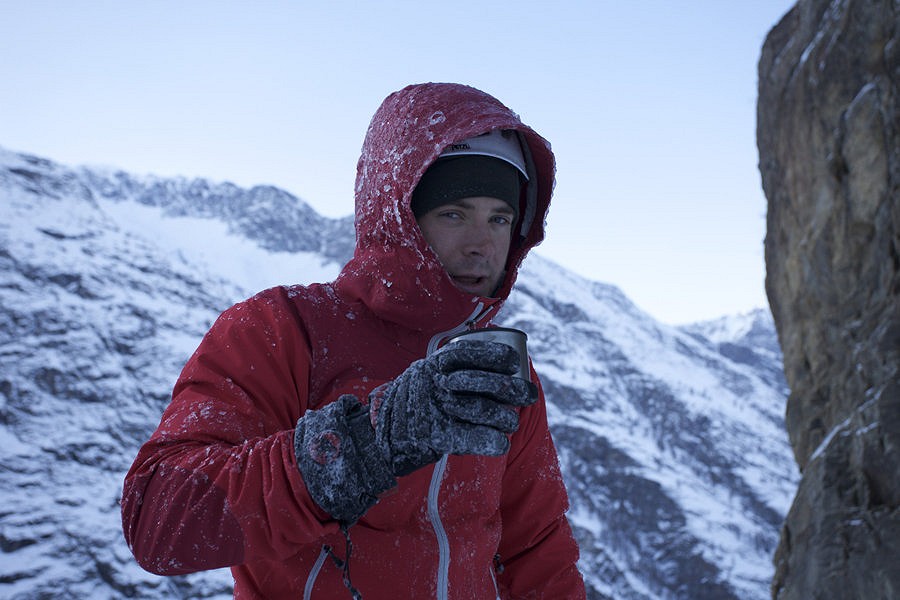
Axe
Well to be honest it's a pretty easy choice. The Petzl Nomics are still the leaders in the field for a modern mixed alpine tool. Obviously you can't get them this winter, which is a bit of a pain but the new version (when re-released) has the option of a hammer and a pick at the bottom which is perfect for alpine routes. In the meantime for those of us who ache for a hammer Dane Burns sells them from his site here, as well as some modified picks that are definitely worth taking a look at. If you want something for this winter then I would suggest the new Black Diamond Fusion which is very similar to the Nomic.
"...Axes - well to be honest it's a pretty easy choice ... Crampons are a bit of a minefield though..."Crampons
Crampons are a bit of a minefield I find. Ideally you want the lightest rigid crampon out there, which is the Petzl Dart or its dual version, the Dart Twin. One of the new breed of superlight crampons, the Darts shed weight by having the whole front bail and front point as one piece. In other words you can't replace just the front points when they get worn down, you have to replace the whole bail. Obviously an expensive proposition but the weight-saving is very noticeable. I have a mono front bail for mixed mountain routes and a dual point bail for ice. The front points on the Darts are also quite different from the norm. The Mono point sits pretty much square under the foot as opposed to under your big toe and the duals have a slightly longer external point. This makes sense on waterfall ice but is a bit of a pain when you get on the mixed as you end up with all your weight centred over your little toe - you can of course rectify this with a bit of filing on the longer front point. Otherwise though the Darts are a brilliant crampon and highly recommended.
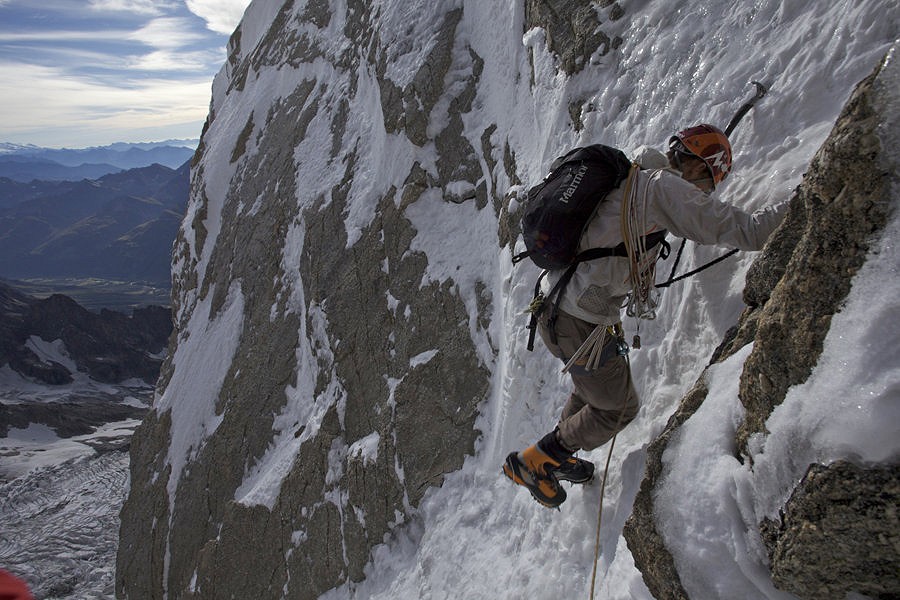
Ice Screws
Ice screws... always a very delicate recommendation. There are die hard Grivel and die hard Black Diamond advocates. I got some of the new Helix's from Grivel this year and seeing as I was a die hard BD fan I was amazed to find that the Helix's now take pride of place in my ice screw line up. They actually go in quicker than the BD ones, which is great when you're pumped and scared on the lead. There are other advantages as well to the Helix's but I will write a full review on them at some later date. Ice screws are expensive though, so climbers will normally just go for whatever deal they can find or the cheapest ones - I've been really impressed with the Helix's so definitely recommend these if you can afford the heavy price tag.
Helmet
I have used a Petzl Altios for three years now. It seems a bit out-dated now with the arrival of, for example, the Meteor but it still has a trick to it that other helmets don't have. It has a (removable) mesh webbing at the top of the helmet which allows the helmet to sit 5cm or so higher than normal helmets. The downside is it does look ever so slightly weird but the bonus is a totally unrestricted view and you won't even notice that it is on. It makes this without a doubt the comfiest 'hard' helmet out there - the extra ventilation afforded by the mesh system is really noticeable in the summer too.
Happy climbing!
Jon.
About Jon Griffith

Jon Griffith's first climbing days were in the Avon Gorge at Bristol. After university he moved to Chamonix, where he works as a professional mountain photographer: www.alpineexposures.com.
"It's hard to pick one specific type of climbing that I prefer over the others but I think my heart still lies with big mixed alpine routes that potentially involve a couple of nights bivying. I am still getting used to the whole Chamonix 'get back in time for the last lift' style - I still include bivying as a part of any decent mountaineering experience. I am also still getting used to crack climbing - it hurts.... a lot."

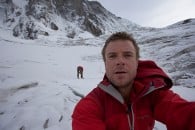

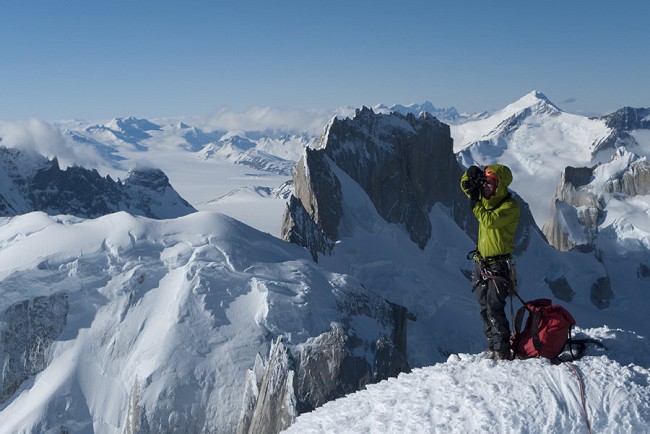
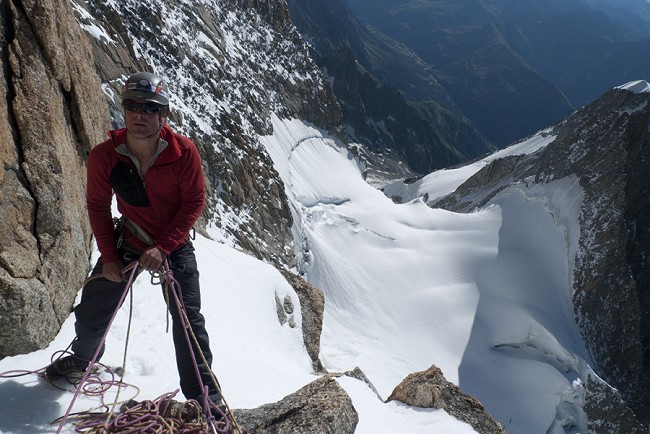
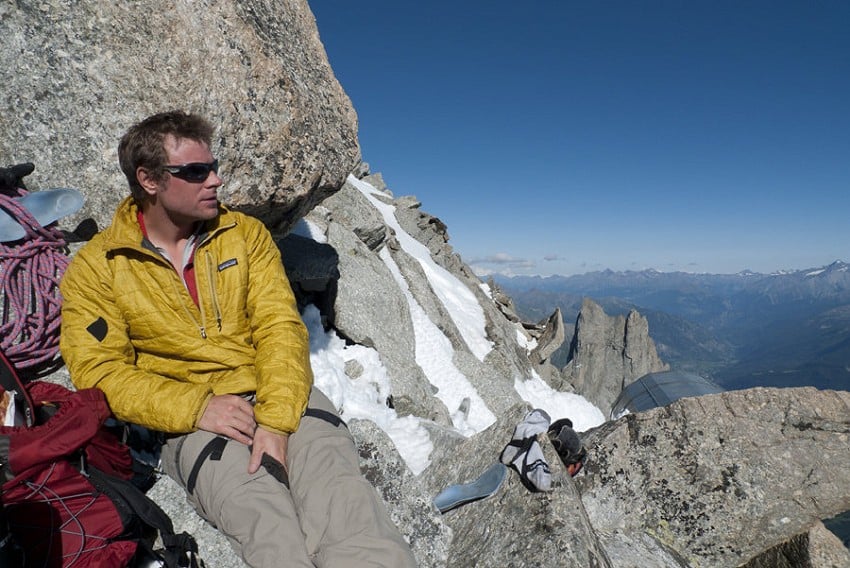





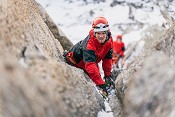
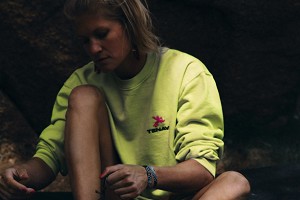
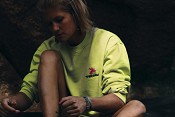
Comments